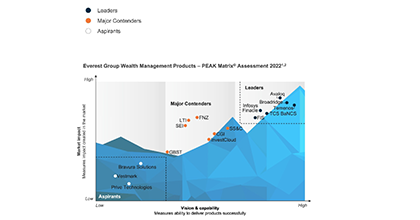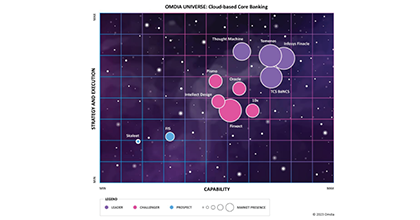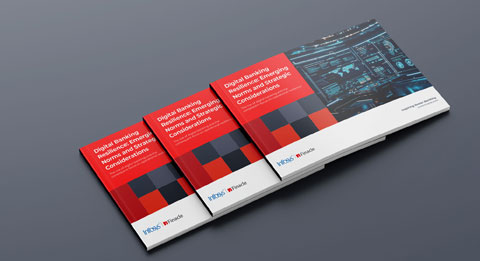Over the past few years, the banking industry in the United Kingdom has undergone significant changes. The rise of digital technologies and changing customer preferences, especially in the wake of the pandemic, have led to shifts in how people interact with their finances. In response, traditional banks have been forced to adapt and innovate, with many opting to restructure their operations to meet their customers’ needs better. From increased efficiency and reduced costs to improved customer experiences and greater financial inclusion, there are multiple reasons why recomposed banking may be the way forward for the industry.
With more than 1,600 fintech (financial technology) firms, the UK ranks among the top financial technology centres in the world. And although even the most successful firms, such as Revolut, Monzo Bank, Starling Bank and Wise, may not be threats on their own, they are collectively turning up the heat on the incumbents.
In a survey1 of 261 UK banks and financial-services firms published in January 2022, 60 percent of respondents felt that neobanks would overtake Tier 1 institutions, thanks to their abilities to meet customers’ needs better. Also, 63 percent of respondents said that the gap between traditional banks and fintech firms had narrowed in the preceding 12 months.
Clearly, UK banks will need to take substantive, proactive measures to retain their leadership positions in the future. In our view, the best way to accomplish this is by continually focusing on becoming a better bank in every respect. But how can a bank that is running successfully and has invested in optimisation and digital transformation become “meaningfully” better? By recomposing banking.
Banks with old-world business models should recompose them to adopt new-age models, such as digital-first banking, embedded finance and banking as a service (BaaS). Also, to match the agility and cost efficiency of their new rivals, traditional banks should recompose their own operations to save costs and accelerate growth.
While recomposing banking, an effective approach is considering how it impacts value for key stakeholders. Here is a simple framework:
By Recomposing Customer-Value Creation
In the past, traditional universal banks had a vertically integrated structure, meaning that they owned and operated every part of their businesses, from product development to distribution. If a bank wanted to create a new product or service, it would typically need to build it from the ground up, often at great expense and with significant time and resource investments.
Today, however, the rise of digital technologies and the increasing availability of third-party services have made it easier for banks to create new offerings without starting from scratch. By leveraging a partner’s or third-party provider’s foundational capabilities, banks can rapidly develop new products and services, reducing the time and costs required to bring them to market.
For example, a bank could use Stater’s mortgage utility service to launch a new mortgage offering. With product design, operations and collections taken care of by its partner, the bank can focus on engaging with and selling the product to customers. Sometimes recomposing value creation can yield “extra” value. For example, Goldman Sachs has secured much more value by partnering with Apple Card than it could have earned by working alone. Interestingly, our joint research with EFMA (European Financial Management Association) on retail-banking innovation found that 76 percent of banks successfully used innovation ideas from partners and fintech firms.
By Recomposing Customer-Value Delivery
Value delivery has changed even more than value creation. Instead of acquiring and serving customers through their own channels, banks now rely on partner networks for origination and distribution. Some banks have recomposed value delivery in this manner since birth; an example here is Goldman Sachs, which has always used partners to reach end customers with products and services. After partnering with Stripe to service online merchants with banking accounts and payments, the company enlisted Shopify as its extended partner after Stripe integrated its services with Shopify.
Other methods of recomposing banking delivery include embedded finance and related spaces, such as buy now, pay later (BNPL). This trend has taken root, with incumbent banks using non-bank channels, such as Amazon Pay or Google Pay, to reach vast consumer bases with their offerings.
By Realising Organisational and Shareholder Value
For decades, banks relied primarily on interest income to generate revenue, with some additional income from fees and other sources. However, in recent years, low interest rates have put pressure on banks’ profitability, forcing them to explore new ways to generate income.
While interest rates have begun to rise in some regions, regulatory and market pressures continue to create challenges for banks. For example, the cap on interchange fees for card payments, the MDR (merchant discount rate), has reduced revenue for many banks, particularly in Europe. Other regulatory changes, such as increased capital requirements and stricter compliance obligations, have also added to banks’ costs, making it more difficult to generate returns.
In response to these challenges, banks increasingly seek new ways to realise value for themselves and their shareholders. One strategy is to shift the focus from traditional interest-based business models to fee-based or value-added services. This could include offering new products and services that generate recurring revenue, such as wealth management, insurance or advisory services.
Another strategy is to leverage digital technologies to create operational efficiencies and lower costs. By automating processes, eliminating manual labour and adopting new technologies, such as artificial intelligence and blockchain, banks can reduce their dependence on interest income and generate revenue from new sources.
Ultimately, this need for banks to realise greater value for themselves and their shareholders drives the shift towards recomposed banking: partnering with third-party providers to create more tailored and innovative offerings. By doing so, banks can differentiate themselves in a crowded market, create more value for their customers, and ultimately drive growth and profitability. One way for banks to improve their levels of profitability is by reducing their cost-to-income ratios, and digitisation can be an effective strategy to achieve this.
By leveraging digital technologies, banks can streamline processes, reduce dependence on manual labour and eliminate redundant functions. This can result in significant cost savings, which can be reinvested in new digital initiatives or returned to shareholders as dividends. Additionally, recomposing value creation and delivery through digital channels can create operational efficiencies that further lower costs, enabling banks to realise even greater value for their shareholders.
End Note
The good news is that technologies—especially cloud, API (application programming interface) and webhooks—enable banks to recompose their businesses with speed and economy. A case in point is BaaS, which recomposes value creation so brands can launch new offerings faster than ever before. Not just product development or delivery but a full range of services can be recomposed to build a complete digital bank without large investments in technology, operations, talent and so on. The only resources needed in abundance are a proactive stance, an open mindset, robust skills and a toolset to put it all together.
This article was previously published in the International Banker.






















